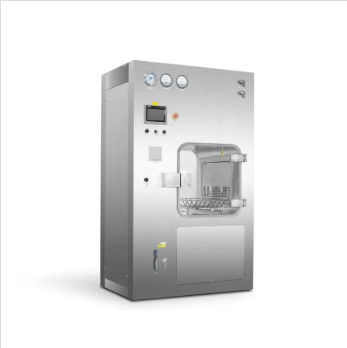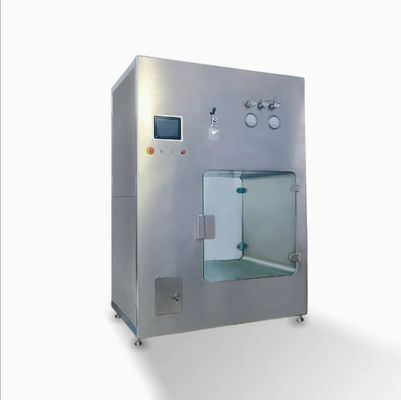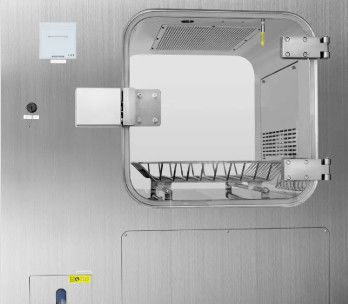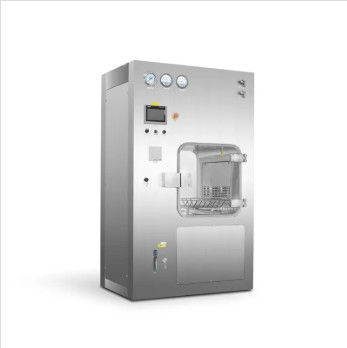VHP Transfer Window/Pass Box | Sterilization for Cleanrooms & Labs
Product Details:
| Place of Origin: | Guangdong, China |
| Brand Name: | MRJH |
| Certification: | ISO 14644,EU GMP,FDA |
| Model Number: | MRJH - CLCDCQ304 |
Payment & Shipping Terms:
| Minimum Order Quantity: | 1 |
|---|---|
| Price: | Contact Us |
| Packaging Details: | Wooden frame |
| Delivery Time: | 7-15 working days |
|
Detail Information |
|||
| External Dimensions: | W1200 × D800 × H2000 (mm) | Air Shower Area: | W600 × D800 × H600 (mm) |
|---|---|---|---|
| Custom Made: | Support | Official Website: | Www.ffu-cleanroom.com |
| Certification: | ISO,CE,UL,RoHS | ||
Product Description
![]()
VHP (Vaporized Hydrogen Peroxide) Pass-Through Chamber
A VHP pass-through chamber is an auxiliary device used in cleanrooms or sterile environments. Its primary function is to minimize cross-contamination when transferring items between areas of different cleanliness classifications. It achieves this by using vaporized hydrogen peroxide (VHP) technology to decontaminate item surfaces, ensuring that items entering high-cleanliness zones do not introduce contaminants.
Working Principle
The operation of a VHP pass-through chamber relies on the potent sterilizing capability of vaporized hydrogen peroxide. When items are placed inside the chamber, a vaporization unit converts liquid hydrogen peroxide into a gaseous state and introduces it into the chamber cavity. This process consists of several distinct phases:
-
Conditioning Phase: Rapidly increases the concentration of hydrogen peroxide vapor within the chamber until it stabilizes at the target level.
-
Sterilization (Dwell) Phase: Maintains the required concentration of hydrogen peroxide vapor within the chamber cavity for the necessary duration to achieve sterilization.
-
Aeration (De-gassing) Phase: After sterilization is complete, reduces the hydrogen peroxide vapor concentration inside the chamber to safe levels (typically below 1 ppm). The inner door can then be opened to remove the items.
Structural Features
VHP pass-through chambers are typically constructed from stainless steel, offering excellent corrosion resistance and ease of cleaning. Key design features include:
-
Enclosure & Doors: Made of stainless steel, formed through bending, welding, and assembly. The interior features rounded corners at the base for simplified cleaning.
-
Interlock System: Doors on both sides incorporate mechanical or electromagnetic interlocks to prevent simultaneous opening. This ensures direct air exchange between areas of different cleanliness levels is avoided.
-
Seals: Continuous inflatable (pneumatic) seals are installed around the door perimeter to enhance sealing performance and prevent gas leakage.
-
UV Lamp (Optional): Some models include an integrated UV lamp for supplementary disinfection.
Advantages
Compared to traditional UV sterilization methods, VHP pass-through chambers offer significant advantages:
-
High Efficiency: Shorter sterilization cycles, typically completed within 1-4 hours.
-
Safety: Vaporized hydrogen peroxide breaks down into water vapor and oxygen, leaving no toxic residues. It is non-toxic to humans at the residual levels achieved after aeration.
-
Broad Material Compatibility: Suitable for sterilization under various temperature conditions and gentle on sensitive materials, minimizing damage to treated items.
-
Extended Equipment Lifespan: Operates at ambient temperature and pressure, reducing stress on the chamber structure and internal components, thereby extending service life.
Application Areas
Due to their efficiency, environmental friendliness, and safety, VHP pass-through chambers are widely used across several industries:
-
Healthcare Facilities: Hospitals, operating rooms, etc., to protect patients from infection.
-
Biological Laboratories: Provides researchers with a sterile transfer environment, safeguarding experimental integrity.
-
Pharmaceutical Manufacturing: Ensures sterility requirements are met during drug production, enhancing product quality.
-
Food Processing Plants: Maintains food safety standards by preventing bacterial contamination during transfers.
![]()
![]()
![]()






